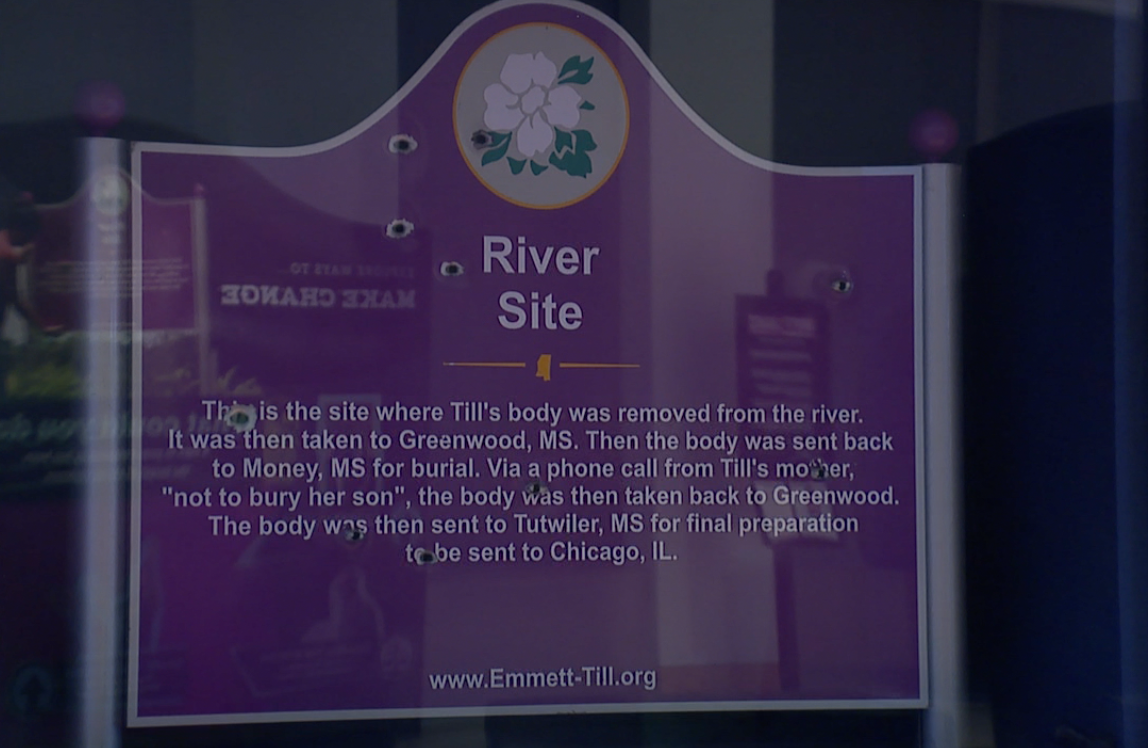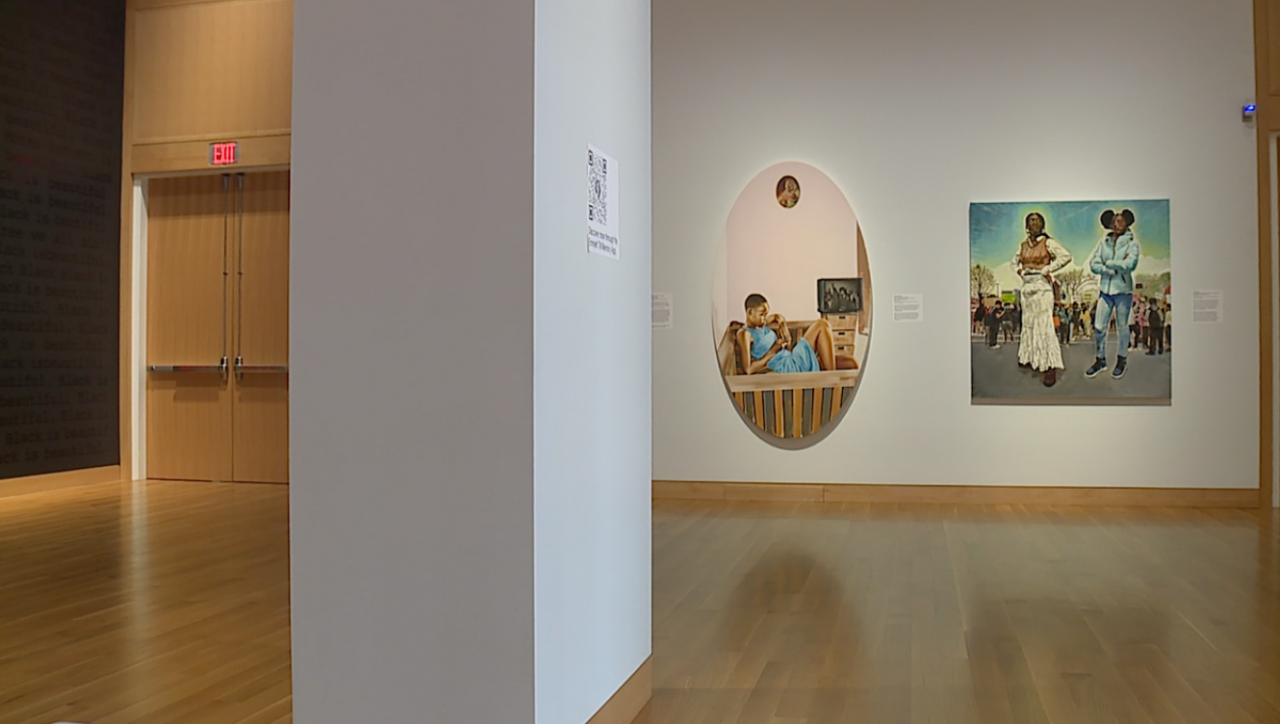LAWRENCE, Kan. — The story of Emmett Till turned the nation’s attention toward racial injustice in the south nearly 70 years ago.
In a traveling exhibit titled "Emmett Till & Mamie Till-Mobley: Let the World See" Till's childhood is captured along with his family's fight for justice after he was murdered in 1955.
"There’s many pictures about his boyhood, which means the robbery took effect," said Jim Nunnelly, from KCMO.

Nunnelly was nearly the same age as Till when he heard of his death.
"I remember most of wondering what it meant. I was 13," Nunnelly said. "Being a teenager at the time, it was very difficult to identify whether you want to ignore it or accept it."
Think about having to go back to school with those feelings as a teenager.
"I can remember walking around — am I next?" Nunnelly said.
While Till was visiting family in Mississippi, he went shopping at a store owned by a white family, Roy and Carolyn Bryant. Someone accused Till of whistling at Carolyn Bryant. Till was kidnapped, beaten, shot and found in the river with a metal fan tied to his neck with barbed wire.
Nunnelly stands inside of the exhibit reminded of parallels from when he was a teenage boy in 1955.
"There were no counselors or any guidelines on what to do when a catastrophe occurs," he said. "You had to work it out yourself, and some of that bleakness passed on through generations because if you don’t deal with it when it occurs, you will deal with it later."

While Professor Dave Tell’s experience growing up does not mirror Nunnelly’s, a large focal point of his work and research has been Till’s murder.
In 2019, he helped launch the Emmett Till Memory Project, an app that highlights important locations related to Till’s murder, including the sign displayed in the exhibition. Part of the reason for the project was constant vandalism of memorials for Till.

"If you start on the day Till was murdered in 1955, you have to count 49 years and 11 months before the state of Mississippi dropped a dollar on telling the Till story," Tell, a communications studies professor at the University of Kansas, said.
Today, there are plenty of reminders of Till, including the exhibit named after the famous words of his mother "Let the world see."
"The body had been shipped on a train from Mississippi to Chicago. It came off the train. It was locked with the seal from the state of Mississippi with orders not to open. Mamie Till-Mobley said, 'Let the world see what they did to my boy." Tell said.
Kansas City, Missouri's, connection to Emmett Till
Two suspects, Roy Bryant and John Milam, were tried and acquitted by an all-white jury for Till's murder in 1955.
The Federal Bureau of Investigation reopened the case in May 2004 to determine if other individuals were involved.
"When the FBI reopened the case, here’s how it happened: A filmmaker in New Orleans had evidence more people were involved but didn’t have legal statute to reopen it. He drove from New Orleans to Kansas City, Kansas, where he met Alvin Sykes," Tell said. "They went to the downtown branch of the Kansas City, Missouri, Public Library. Alvin showed him the law books that had the statute that gave FBI clearance to reopen the case. They drove from Kansas City to Chicago, where they met with Mamie Till-Mobley and asked for her blessing. She said 'yes.' They drove directly to Oxford, Mississippi, to the FBI office where Dale Killinger opened the case."
The FBI never investigated Till's murder prior to 2004.
"In March 2006, the FBI announced that information developed in its exhaustive investigation confirmed the Department of Justice's earlier conclusion that the five-year statute of limitations on any potential federal criminal civil rights violation had expired, thereby precluding federal prosecution of this case," according to the FBI's website.
'One History, Two Versions'
A companion exhibit to Till's titled “One History, Two Versions" is partially a reminder that racial injustice is not an experience of the past.
"We're talking in 'One History, Two Versions' about things that are happening today — violence against Black people that is very recent, from Trayvon Martin to Breonna Taylor to George Floyd — but also some of the more positive parts of Emmett and Mamie’s story, like the love between a mother and her son," said Sydney Pursel, a curator for the Spencer Museum of Art.

The title of the companion exhibit came about because Till's murder was covered differently in two different newspapers at the time.
The curators of the art, which includes some work from local artists, wanted to pair art and conversations with the traveling show.
The mixed feelings Nunnelly felt processing Till's murder as a teenager are in a way comparative to his feelings after taking the traveling exhibit in.
"The timing of this never left me, so I don’t know whether to be happy that there’s an event commemorating it or re-sad," Nunnelly said.
Lawrence, Kansas, is the seventh stop for Till's exhibit.
The next stop hasn't been confirmed yet, but the Spencer Museum of Art will have it on display until May 19.
"This exhibit is carrying forward the work Mamie started in Chicago in 1955 when she said let the world see," Tell said.
The world has seen and heard every grueling part of Till’s story.
When you’re all grown up now like Nunnelly, Till’s story isn’t just a part of history books — it was a part of his life.
"James Weldon Johnson said it best, 'Lest we forget,'" Nunnelly said. "Somehow there was a feeling we should never remember this."
Carolyn Bryant, the white woman whose accusation led to the lynching of Emmett Till, died in April of 2023.
Her death is a reminder we are not that far removed from this part of history.
The Spencer Museum of Art will host a discussion with Emmett Till’s cousin who witnessed his kidnapping.
The event is scheduled for April 24. More details will be released in the next several weeks.
—




